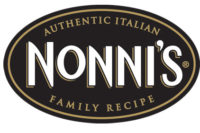Every Bit Counts
By Lynn Petrak
Inclusions can play a big part in the flavor and appearance of finished products.
Sure, good things come in little packages, but sometimes, the little things are what make the goods.
Inclusions — the sweet and savory bits that are incorporated into breads, baked goods and snack foods — can pack a big punch by adding flavor, color, nutrients and, ultimately, value to the product. Although such ingredients have been around for nearly as long as dough and batter — witness the fruit-studded breads, nut-filled cakes and chocolate chip cookies that are perennial favorites — today’s bakeries and snack food manufacturers are mixing it up a bit more, so to speak.
Inclusions typically are added for taste. Such pieces supply flavor to an existing base, whether it’s a multigrain bar, snack cake or loaf of otherwise basic white bread. But beyond mouth appeal, mixed-in morsels of varying size, taste, color and nutritional composition are pumping new dynamics into the industry, literally and figuratively, reflecting general market trends of health, wellness, environment and global influence.
The results of such trends are evident on retail shelves and restaurant menus, as manufacturers seek to differentiate themselves in an all-too-competitive environment for consumers’ food dollars. Indeed, being more things to more people sometimes means adding more in the product itself.
The Flavor Factor
It’s been said repeatedly that consumers’ palates are growing more sophisticated, and it’s true. As Americans look for more unusual flavor profiles, it’s not surprising that bakers and snack producers seek to attract customers by offering products with different or more intense bursts of flavor.
Turning the concept of “less is more” on its head, there has been greater use of inclusions in bread, baked goods and snack products that are considered gourmet or culinarily hip. That’s one reason cookies loaded with candy bits; breads bursting with berries, nuts and swirls; and sprinkle-laden cakes churned into ice cream have become part of today’s supermarket offerings. Even the chocolate chip isn’t so humble anymore when taken to the next level as large dark chocolate chunks or chocolate-encased caramel pieces designed to withstand the high heat of the baking process.
Today’s combinations of flavors often result in multiple inclusions, notes Dennis J. Reid, vice president of sales and marketing for ingredient supplier SensoryEffects, which recently was bought by Performance Chemicals and Ingredients (PCI) of St. Louis.
“We have seen a growing trend towards more multi-dimensions systems combining several flavors like maple/cinnamon/vanilla to simulate a French toast flavor, a strawberry/blueberry/raspberry for a triple berry sensation, or even a Cheddar/garlic/jalapeño to add a cheesy zest to any baked good,” he says.
Mike Schrauth, vice president of sales and marketing for Elk Grove Village, Ill.-based QA Products, Inc., which produces confectionery toppings and inclusions, agrees. “We’re seeing more and more requests for naturally flavored or fully favored products to complement more indulgent finished products,” he reports.
Among its sugar- and cereal-based crunches that are flavored and often mimic fruit inclusions, QA Products developed a line of caramelized sugar crunches that are cooked in copper kettles.
“The base is bulked with additional ingredients like nuts and coconut to produce a full-flavored finished product,” Schrauth explains.
Additionally, many of QA Products’ newer flavor profiles reflect the much-talked-about consumer move toward more intense, upscale tastes.
“Some of our newer items include a Cappuccino Crunch, Orange Cream Crunch and Peppermint Crunch,” Schrauth says.
Similarly, Jim Thomasson, executive vice president of sales and marketing for inclusion supplier Cereal Ingredients, Inc., Leavenworth, Kan., notes that much of his R&D work for customers in this industry over the past few years has centered on new types of flavors and applications. As part of its line of fruit analogs and inclusion pieces, the company has long supplied the cinnamon mix for Pepperidge Farm Cinnamon Swirl bread, he says, which now has begat such flavors as Raisin Cinnamon Swirl, French Toast Cinnamon Swirl and French Vanilla Cinnamon Swirl.
Thomasson also points to the expansion of the frozen waffle category, which includes somewhat traditional favors such as blueberry and apple-cinnamon, as well as newer inclusions such as chocolate chips and formats such as Toaster Swirlz cinnamon roll minis from Kellogg Co.’s Eggo brand.
“It’s a liquid batter, and you have to develop a bit that can go into that batter and hold up for 20 minutes or so while the batter is pumped and put out on a griddle,” Thomasson says. “That is the uniqueness of some of our applications.”
Although traditional inclusions such as crushed-up cookie bits remain popular, there are several new products and applications that mirror emerging tastes in the marketplace, says Rob Quigg, one of the family owners at century-old Richmond Baking Co., a Richmond, Ind.-based provider of cookies, crackers, coating systems and dessert crumbs.
“We are doing a lot of inclusions for cheesecakes,” reports Quigg, noting that there also has been more interest in coarser cookie inclusions. In addition, Richmond Baking is doing more custom work, another indication that competition has heated up in manufacturers’ ongoing quest for signature flavors.
The Aesthetic Factor
Yet another way that bakers try to distinguish their product and brand is through aesthetic appeal. In many cases, that involves inclusions of different shapes and colors.
According to Schrauth, QA Products offers various two-dimensional pieces for both taste and appearance.
“We see a number of bakers who introduce our shaped products into baked goods to add visual interest,” he says. Although many shaped items are used for toppings, they can be incorporated into baked goods, as well, and range from butterflies to wedding bells to the pink ribbons associated with breast cancer awareness campaigns.
Signature Brands, LLC, Ocala, Fla. is another supplier that continually has introduced new sprinkles, nonpareils and other decorative bakery inclusions. It offers colorful bits in shapes such as moons, stars, dinosaurs and popular seasonal shapes, such as leaves and bats for fall and hearts for Valentine’s Day.
At SensoryEffects, meanwhile, Reid reports a similar trend toward eye-catching inclusions.
“The actual size and shape of the inclusion can be altered to change the visual impact in the finished product,” he says.
Color is another way to inject some pizzazz, quite literally, into a cake, cookie, pie, snack cake, pastry or other baked good. Anyone who has been to a supermarket in the past year knows that prepared cake mixes are marketed seasonally, with holiday-themed bits such as Christmas trees; red, white and blue sprinkles for the Fourth of July; and Easter Bunny shapes, to name a few. Likewise, some oven-ready cookie products also include not just chocolate chips, but seasonal candy bits.
Color also reflects certain regional or cultural preferences. Bright, vivid hues such as red and yellow have particular appeal to Hispanic consumers. Reid, for his part, says that both color and shape are used to help customize a particular product and gain attraction on the shelf or menu.
“Inclusions like SensoryEffects allow for quick and easy flavor and color combinations to shift with changing demographics and consumer eating trends,” he observes.
The Functional Factor
Not to be left out of anything, inclusions also are being incorporated into baked goods for health, nutrition and wellness reasons. Adding even small pieces of foodstuffs deemed “better for you” also can be better for a manufacturer seeking to deliver value to the consumer.
“One of the big things we’re looking forward to being involved in now and one of the biggest things in the food industry is health and wellness,” Thomasson says. “We’re looking to be a big part of that.”
To that end, health-oriented pieces tend to be less on the confection side and more toward fruits, nuts and grains.
Although fruit-based inclusion have long been used in recipes for breads and baked goods, some fruits have been the focus of more buzz than others. Blueberries, for example, have been touted in recent years for their antioxidant benefits. As such, they’ve been added to more products, from standbys such as pancakes, cookies and cakes to more grain-based breads and protein/snack bars. Similarly, cranberries also are gaining in popularity for their nutritional composition and purported health benefits.
Other inclusions infused into bakery products for health and nutrition benefits are examples of technological inroads made by bakers and ingredient suppliers. Cereal Ingredients, Inc., for instance, provides a host of ingredients for products like nutritional snack bars, Thomasson says.
Inclusions that impart nutritional benefits also include ingredients such as Omega-3 fatty acids and high-fiber inulin. Again, such ingredients can be added via various routes, such as gums and other blends. As part of its multi-component systems, for instance, SensoryEffects now offers nutritional Omega-3 inclusions.
While there are consumers who want to improve their health by eating more nutrient-rich and functional foods, there also are millions of Americans on diets either to lose weight or because they have a specific health condition and are looking to reduce their intake of fat and calories.
“Our particulates are already low in fat content and can be lower if necessary,” Thomasson says.
In the meantime, there also is a growing group of consumers who are helping spur another trend in the food industry: organic products.
“There hasn’t been a huge demand for certified organic inclusions yet, but they are coming,” Quigg predicts.
Like all inclusions, organic is growing, bit by bit.



